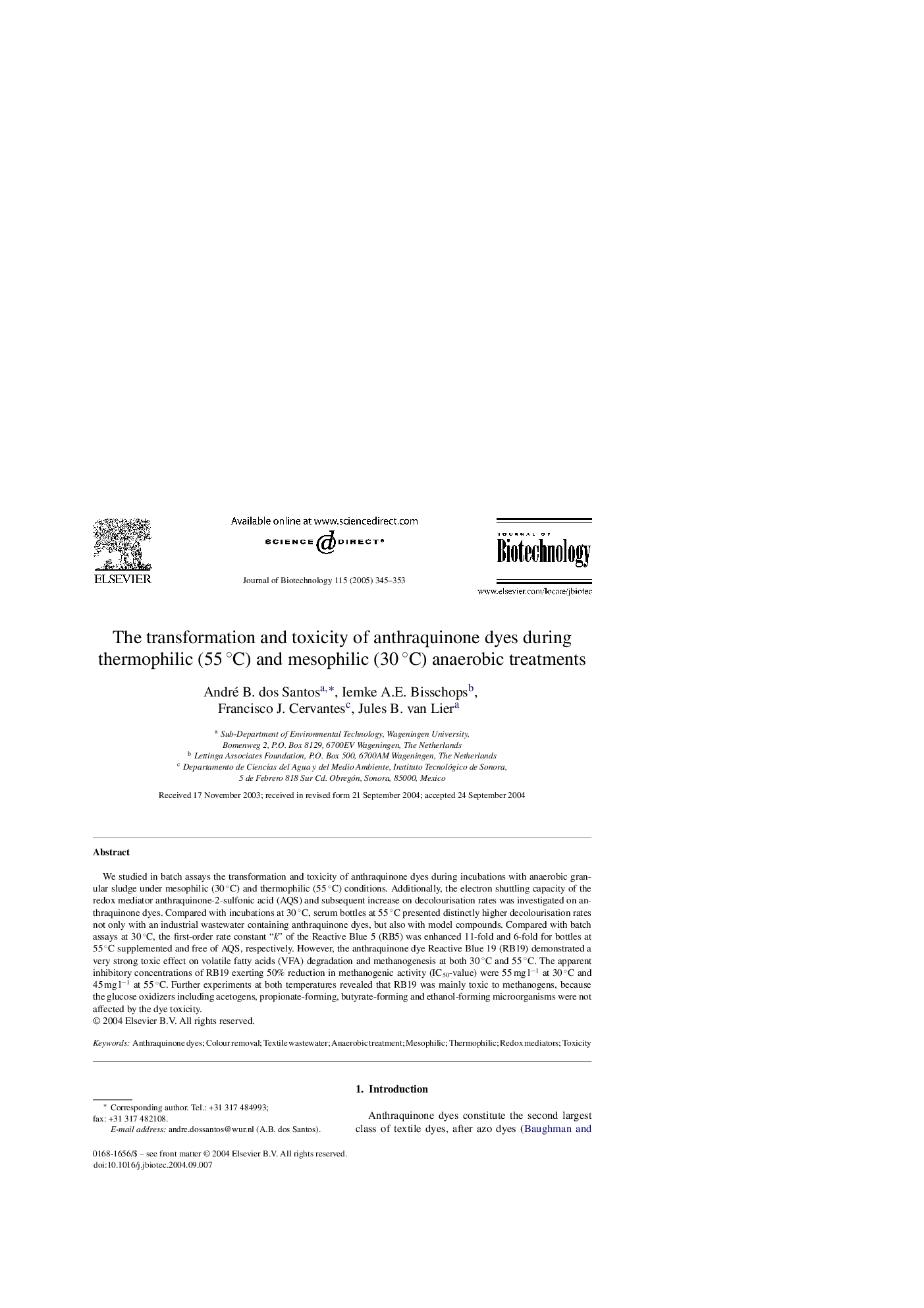| Article ID | Journal | Published Year | Pages | File Type |
|---|---|---|---|---|
| 9604461 | Journal of Biotechnology | 2005 | 9 Pages |
Abstract
We studied in batch assays the transformation and toxicity of anthraquinone dyes during incubations with anaerobic granular sludge under mesophilic (30 °C) and thermophilic (55 °C) conditions. Additionally, the electron shuttling capacity of the redox mediator anthraquinone-2-sulfonic acid (AQS) and subsequent increase on decolourisation rates was investigated on anthraquinone dyes. Compared with incubations at 30 °C, serum bottles at 55 °C presented distinctly higher decolourisation rates not only with an industrial wastewater containing anthraquinone dyes, but also with model compounds. Compared with batch assays at 30 °C, the first-order rate constant “k” of the Reactive Blue 5 (RB5) was enhanced 11-fold and 6-fold for bottles at 55 °C supplemented and free of AQS, respectively. However, the anthraquinone dye Reactive Blue 19 (RB19) demonstrated a very strong toxic effect on volatile fatty acids (VFA) degradation and methanogenesis at both 30 °C and 55 °C. The apparent inhibitory concentrations of RB19 exerting 50% reduction in methanogenic activity (IC50-value) were 55 mg lâ1 at 30 °C and 45 mg lâ1 at 55 °C. Further experiments at both temperatures revealed that RB19 was mainly toxic to methanogens, because the glucose oxidizers including acetogens, propionate-forming, butyrate-forming and ethanol-forming microorganisms were not affected by the dye toxicity.
Keywords
Related Topics
Physical Sciences and Engineering
Chemical Engineering
Bioengineering
Authors
André B. dos Santos, Iemke A.E. Bisschops, Francisco J. Cervantes, Jules B. van Lier,
